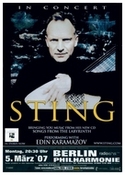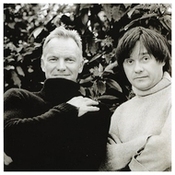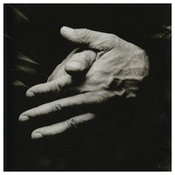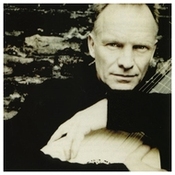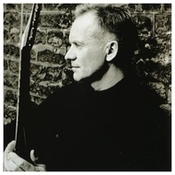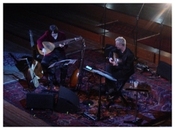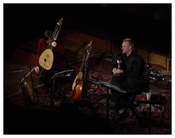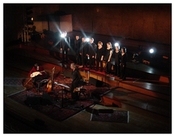
Message on the lute...
Yoga for the ears: At the Philharmonie, Sting celebrated the late medieval lute songs of John Dowland as the roots of British pop – and presented himself as one with dignity.
Sooner or later, it all seems to happen to everyone. At some point, the great artists of the New Wave era are driven with full force into the spheres of high culture. Elvis Costello, along with mezzo-soprano Anne Sofie von Otter and the Brodsky Quartet, was drawn to the classical world. Joe Jackson, along with mezzo-soprano Anne Sofie von Otter and the Brodsky Quartet, has increasingly lost himself between classical, jazz, and symphonic pop compositions on his recent albums. And David Byrne has also dabbled in various ambient soundtracks, theatre music, and pop operas. It's no surprise, then, that Sting has now swapped the U for an E.
In recent years, he has discovered Renaissance lute music and taken lessons on the instrument. But Sting wouldn't be Sting if he didn't share his lute exercises with the whole world. His last album, "Songs from the Labyrinth," was released on the renowned classical label "Deutsche Grammophon," whose logo proudly adorns the cover. Now he's carrying his message on the lute to concert halls around the world. On Monday evening, it was the turn of the Berlin Philharmonic.
But every beginning is fraught with hesitation. Bosnian lute player Edin Karamazov opened the evening purely instrumentally, performing, among other things, virtuoso Bach Variations. With his red velvet jacket, black trousers, and Prince Valiant hairstyle, he himself resembled a minstrel from a bygone era. Only then did Sting step onto the stage and silently take a seat next to him. Thus, at first, the two seemed like master and shy student. Only over time did the focus of the concert inevitably shift to the pop star.
Sting led the evening in the style of a storyteller, gently illuminated by the spotlight. He told the story of John Dowland, the greatest lute player of his time, who elevated courtly songs to an instrumental art form in the 16th century. He also recounted how Dowland hoped to find employment at the court of the Protestant Queen Elizabeth I, but as a Catholic, was initially denied a position. So he travelled across Europe, from Denmark to Italy, from royal court to royal court, before returning to his homeland. Once upon a time in England.
Sting sang the poems from the Elizabethan era with appropriate sobriety, but his characteristic voice remained fragile. Dramatically effective, the number of backing singers on stage changed with each song, although the mixed choir of "Stilo Antico" seemed rather underwhelmed.
In recent decades, Dowland has been rediscovered as the progenitor of a quiet, fragile song tradition. Sting simply joined in. But the argument about whether this is merely the swanning of an established rock star or a contribution to the popularization of a genre is pointless. Sting celebrated Dowland's late medieval music as a root of British pop. And why not? When he played his own pieces like 'Fields of Gold' and 'Message in a Bottle' on the lute for the encore, it fit in seamlessly.
Fans of medieval music may have heard John Dowland's songs better. But for his audience, who appreciate him as a pop singer, Sting shows a way to age gracefully as a pop star. After all, it must be said, at 55, he still looks outrageously good: wiry, slim, boyish. The years of yoga training have clearly paid off. Now he celebrated his Renaissance music as something like yoga for the ears.
(c) Die Tageszeitung by Daniel Bax
Sting sings Renaissance songs by John Dowland at the Berlin Philharmonic...
If lutenist Edin Karamazov were a diva, people would be at his feet. Now they are, inevitably, as the lute has always been considered one of the most demanding stringed and plucked instruments. And Karamazov, never one to be lazy, goes all out at the Philharmonic, flinging his hazel-brown, chive-like quiff from right to left, forward, crawling deep into the body of the instrument, rearing up as if he were the troubadour himself, striking a pose on a foaming Arabian stallion under his lover's little window.
But with a rather embarrassing Bach toccata and other theatrical finger exercises, their hearts are unlikely to be won any more than the audience's. But after a good 25 minutes, just as collective patience threatens to wane, and even the colourful gimmicks of the lighting system no longer help, and the Persian carpets on the podium begin to exude a stifling tiredness – there he comes. Sting. The tireless worker in the service of humanity. And of art. The do-gooder and politically correct man with the well-groomed raspy voice. The autodidact who, as he says, had no choice. The songs of John Dowland, these carbuncles of the English Renaissance, have haunted him for 20 years. At some point, encouraged by pianist Katia Labèque and strengthened by Karamazov's competence, he finally surrenders, surrenders. Sting sings Dowland – something more profitable, more honest in terms of crossover could hardly have happened to the record industry.
So Sting takes his seat, adjusts his sheet music and microphone – and begins. Still a little stage frightened and apprehensive during the first numbers, as if he had to first explore the resonances in his head and heart on this evening in this hall, readjust them. Astonishing: His voice - and this has nothing to do with the electronic amplification - sounds more voluminous, richer, more colourful than on the CD. Especially in the lower register, which at times burbles and gurgles, as if the singer were actually observing his alter ego Dowland in the waves of a medieval moat. A cleanly intoned choir (Stile Antico) provides a little more sonic underpinning, and the anecdotes from Dowland's eventful life not only stretch the time, but the singer even offers some of them in impeccable German - the mood is lightened.
Whether Sting always knows how to hold the notes and pitches perfectly, whether he is musically free and soft enough in his individual phrasing to react correctly to minor errors or slip-ups - that's irrelevant. Here sits (later: stands) a man who pays homage to his passion. Professional, but not infallible. Who sings the way you imagine yourself singing if only you had the love and dared to do so, in front of the great John Dowland and the rest of the music world. Perhaps most beautiful: the emphasis in 'Clear or Cloudy', the bilious blackness of 'In Darkness Let Me Dwell'. Music that comforts because it is so old and yet still intact. It's a shame Sting doesn't have more songs on his program. So, a sly wink at the finale and: a bit of Police. For all those who thought they'd come to the wrong venue: Ovations. Either way.
(c) Der Tagesspiegel by Christine Lemke-Matwey
Play it Lute - Sting Sings Classical...
The English composer John Dowland has been buried for 328 years. Now he's back. Thanks to Sting. He's recorded a Dowland record and is singing his lute songs in concert. The tenor's criticism isn't all that bad.
When he enters the encore after 55 minutes and, with 'Fields of Gold', veers into familiar territory for everyone, albeit accompanying himself on the lute, a squeal of relief ripples through the audience. This is especially true when 'Message in a Bottle' begins in its plucked Renaissance version. Suddenly, the strangely uptight tension, this "we have to be very strong now" feeling of wanting to endure everything, having to endure everything, seems to have vanished during this memorable Sting performance at the Berlin Philharmonic.
But it wasn't all that bad. The sold-out hall was filled with a demographically perfectly mixed audience: fans, freaks, and the cereal crowd, a neatly shaved punk with a Sex Pistols logo on the back of his jacket and a Sting portrait on the front of his T-shirt, numerous red-dyed ladies in flowing wool, and ephebic youths with earring.
All of them would certainly never have gathered in the name of John Dowland, hadn't filled 2,200 seats for a lute concert for the first time, if Gordon Sumner, or rather his pop ego Sting, hadn't first encountered the British plucked-fiddle player twenty years ago. At 56, Sting felt mature enough to present his still thin but flexible tenor to the public with a Dowland CD, skilfully reverberating. He passed the classic acid test with distinction. And live, too, it's a pleasing undertaking. Of course, the wonderful Paul O'Dette plays this music unamplified in a castle hall with more subtlety and melancholy than the somewhat tinny-sounding lutenist Edin Karamazov. And of course, someone like Andreas Scholl sings it with his countertenor more enchantingly, with more complexity. But would all these people listen to them?
They do, somehow spellbound, with Sting. Even though - here's where the trained teacher comes through - he recites Dowland's letters and gives a little history lesson in the dim light on the carpeted podium. He also pokes fun at his own (modest) lute skills. And during the part of the songs accompanied by choir, he completely steps back, becoming, with his intense, delicately modulating falsetto tenor, a softly shimmering, modest medium for music that enchants, but which also needs such patrons to even be heard today.
(c) Die Welt

